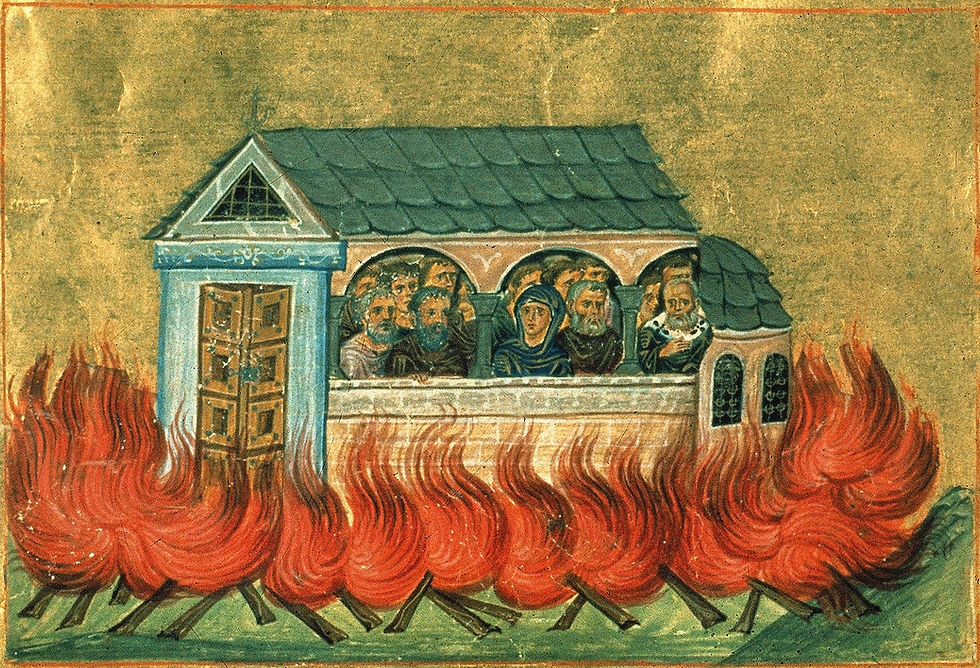Diocletian and St Alban
- Tim Boatswain

- Apr 19, 2020
- 3 min read
Updated: Mar 19, 2023
Some years ago I was invited to give a lecture at Diocletian's Palace in Split, Croatia. The title of my talk was Emperor Diocletian and Christianity. Those of you who have been lucky enough to visit the beautiful city of Split, looking out over the spectacular Croatian coastline, will know that much of the Palace is now home to later buildings, mainly dating to the Venetian period. Archaeologists, however, are able to understand the design of the Late Roman Palace from its surviving basements. These are most impressive, solidly constructed in that ubiquitous Roman brick from which much of St Albans Cathedral was constructed. My lecture was scheduled in the evening to take place in the maze of the Roman basement. It was quite eerie, with flickering lighting casting deep shadows midst immense brick archways; so on a whim, I decided to be theatrical and I started my talk by calling on the ghost of Diocletian to show contrition and apologise to St Alban, explaining to the audience that I lived in St Albans and the Emperor was responsible for St Albans' death. Probably to everyone's relief I did not get, unlike Hamlet, a ghostly response. In 303 CE Diocletian, the leader of the Tetrarchy ('four rulers'), instituted a severe persecution of Christians throughout the empire, although there is some evidence in the Western Provinces, especially in Britain, it was hardly carried out. He was concerned that the old gods were being neglected and this was the cause of the troubles of the Empire, economic decline, insecure frontiers due to 'barbarian' invasions and political instability with the constant overthrow of series of short-lived emperors (in the 50 years before Diocletian there were 26 claimants to the throne, with most of them suffering a violent death). Diocletian attempted to carry out a series of measures to rectify the situation and one of them was the persecution of the Christians. They refused to worship the old gods, believing in monotheism, only recognising their God, and preached an egalitarianism that threatened the established social order.For these reasons Christians were seen as enemies of the state and were persecuted by a series of Roman Emperors.There are, however, no contemporary accounts of Alban's martyrdom and historians are still uncertain when he was exactly executed, so Diocletian, in fact, may not be to blame. Later sources tell us Alban met a Christian priest, who was called Amphibalus, fleeing from persecutors and sheltered him. Alban "was so impressed with the priest's faith and piety" he converted to Christianity, which later led him to be condemned, beheaded and become Britain's first martyr. St Albans Cathedral is thought to have been erected near the site of his execution.Not long after Diocletian's death, Emperor Constantine converted to Christianity, probably in 312 CE, and published an edict granting tolerance to all Christians. Just over sixty years later Christianity became the state religion of the Roman Empire to the exclusion of all other faiths. Christianity had triumphed and shaped our world. Christians also were to gain their revenge on Diocletian when his mausoleum, which is within the remains of his Palace in Split, was converted in the 7th century CE into a Cathedral church dedicated to Saint Domnius. It claims to be the oldest Catholic cathedral in the world which is still in use in its original structure. Somewhat ironically, you can still see high up in the interior of the Cathedral two small heads, Diocletian and his wife, Prisca, looking down on the altar.




Comments